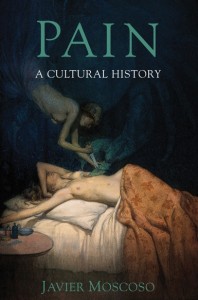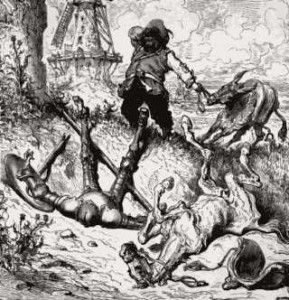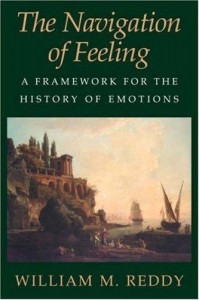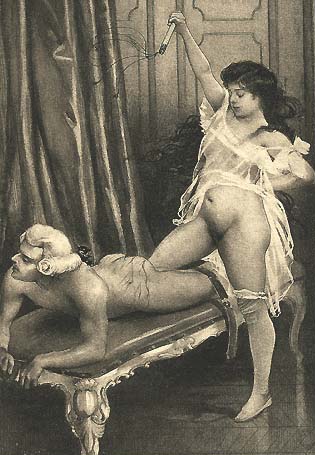Dr Rob Boddice is Marie-Curie CoFund Fellow at the Cluster of Excellence ‘Languages of Emotion’, at the Freie Universität Berlin, and Honorary Research Fellow at the Birkbeck Pain Project, London. Here he reviews Javier Moscoso’s new book Pain: A Cultural History (Palgrave Macmillan, 2012).
 To Javier Moscoso, all the world’s a stage on which a continually revised performance is, and always has been, taking place. The performance is Pain, and humanity variously assumes the role of actor and audience.
To Javier Moscoso, all the world’s a stage on which a continually revised performance is, and always has been, taking place. The performance is Pain, and humanity variously assumes the role of actor and audience.
In medieval Europe the actor was a religious icon, a visual representation of equanimity undergoing extraordinary bodily violence, stimulating an emotional response in the audience in the form of devotion or piety, exemplifying the route to salvation through a refusal to suffer, an absence of pain. The early modern actor was an impassive martyr, who closely guarded the secrets of her suffering as she strove to emulate the passion – literally the pain – of Christ, the audience being let in on the secret through the scarred body and the scratched page of a life in and for pain. Cervantes’ erstwhile knight-errant of the early seventeenth century then took the stage to demonstrate the inevitability of pain in the struggle for freedom, followed by the eighteenth-century actor, suffering torture or gruesome death for his crimes,  casting the pall of his brutality onto the audience, whose ribaldry betrayed a callousness, an animality, that spoke to all the classically perceived dangers of tragedy. In the same period the actor, now imaginary, affected pity from a distance, stimulating the social emotions of civilised fellows, for whom sympathy – literally the capacity to suffer with – involved the audience in the economy of pain and the desire for its limitation. In the early nineteenth century, the ‘century of pain’, the lead actor suffered for the good of civilisation, while a supporting cast of scalpels revealed for the audience the physiological truths of pain, the knowledge of which was to lead to their abolition.
casting the pall of his brutality onto the audience, whose ribaldry betrayed a callousness, an animality, that spoke to all the classically perceived dangers of tragedy. In the same period the actor, now imaginary, affected pity from a distance, stimulating the social emotions of civilised fellows, for whom sympathy – literally the capacity to suffer with – involved the audience in the economy of pain and the desire for its limitation. In the early nineteenth century, the ‘century of pain’, the lead actor suffered for the good of civilisation, while a supporting cast of scalpels revealed for the audience the physiological truths of pain, the knowledge of which was to lead to their abolition.
Later, the actor was anaesthetised, a mere prop, whose objective state freed the fellow players from the trauma of sympathy, allowing for the aesthetics – literally, the sensitivity – of the operating theatre to change beyond recognition, and the plot to morph from tragedy to comedy; or she was an object of beauty, reduced to bondage, a figure of pain to be consumed by the lascivious and guilty bourgeois – the literal aesthete – whose masochistic compulsions enhanced the experience of beauty as a kind of pain. Then came the masochist proper, whose lonely life in search of pain as pleasure was collected, scrutinised, and fetishised by his counterpart, the sexologist or psychiatrist, and spotlighted by a new pathological drama, popularly consumed: deviance.
The narrative builds to a point at which the body is eliminated from the question of pain, and shifts from the history of identifying (with) bodily pain to mistrusting or denying pain. Non-corporeal, purely affective, emotional disorders or syndromes, resistant to physical observation and therefore lacking veracity through the articulation of either the mouth or the body, are subjected to a comedy of naming, disavowing, and excluding. While on the one hand a ‘new form of testimonial trust’ emerges in which the patient, and not the patient’s body, tells the story of pain, and the meaning, the significance, of pain finally enters medical practice (179), on the other hand the institution of medicine repeatedly fails to find the cause of the pain, leaving the sufferer to assume responsibility for it, reduced to her own consciousness, a lonely actor on an empty stage with an audience that cannot see. And finally comes the sufferer of chronic pain, whose part depends on the collective narrative of fellow sufferers in order for it to be endowed with emotional credibility, but whose performance singly lacks a plot, being a suffering with no end.
Whether or not you buy into the theatrical idiom, Moscoso’s narrative of pain is compelling. The book is arranged chronologically, its content ranging such that the particular exemplifies the general, and the general makes sense of the particular. This circular balancing typifies Moscoso’s reasoning, through which we learn of the ‘history of pain’ and the ‘pain of history’ (18), and of a story that transitions from the ‘image without emotion’ in the era of the medieval martyr, to the ‘emotion with no image’ in our world of technological artifices (35), and to the physician ‘who knows but doesn’t feel’ and the patient who ‘feels but doesn’t know’ in the novel and mutually mistrusting script of nervous and psychological pain (173). The history of pain, in another balanced equation, is that of the translation of affective experience in context, and of the formative effect of context on affective experience. That equation does not necessarily demand a stress on ‘performance’, for  William Reddy (author of a recent post on this blog) already formulated the same equation and captured it in the term ‘emotive’, while explicitly denying the language and experience of performativity. But Moscoso’s examples are generally dramatic, focussing on the work of art, the novel, the execution, the operation, and orientating the narrative around the ways in which these dramas unfolded, were received, appropriated, and acted out again and again. The essence is this: ‘there is no suffering that does not entail a social appraisal and, by extension, a form of expression linked to cultural guidelines and expectations’ (56).
William Reddy (author of a recent post on this blog) already formulated the same equation and captured it in the term ‘emotive’, while explicitly denying the language and experience of performativity. But Moscoso’s examples are generally dramatic, focussing on the work of art, the novel, the execution, the operation, and orientating the narrative around the ways in which these dramas unfolded, were received, appropriated, and acted out again and again. The essence is this: ‘there is no suffering that does not entail a social appraisal and, by extension, a form of expression linked to cultural guidelines and expectations’ (56).
The most stunning revelation of this book, therefore, is that the history of pain, while documented on the bodies, the canvases, and the pages of the past, is a history of the emotions, and emphatically so. A more lucid example of the historian’s ability to recover ‘lost’ emotions, to render them in all their brilliant strangeness, and then to present them to us as intrinsically but mysteriously formative of our own ways of thinking, acting, and feeling, would be difficult to imagine. The body in pain is nothing, or at least, is not to be trusted, without the affective experience that gives that pain meaning. Moscoso delights in entangling the histories of pleasure, of sexual excitement, of cruelty, of piety, of liberty, and of truth, with the history of the infliction or the experience of pain, shattering the possibility of glib overtures along the lines of ‘all pain is bad’, and thrusting us into a gallery of painful images mediated by a narrative that cannot fail to induce our own aesthetic response in the form of pleasure. The book, not without irony, stages what it documents. So much is signposted early on, for ‘we have learned to represent our pain within an inherited framework, consisting of values and practices that we no longer recognize as our own. We have changed the sheets, but we have our dream of violence in the beds of others’ (20).
This book serves as a valuable corrective, not only to historians whose appreciation of the historicity of the emotions is only just awakening, but also to those who denounce pain without critical reflection, and to those who treat pain, perhaps clinically, without entering into its affective, historical, cultural, experiential context. It is a story that demonstrates the extraordinary extent to which the languages, expressions, and performances of pain have undergirded, directed, and stimulated culture, while at the same time being subjected to cultural restraints of tolerance and taboo and the limits of meaning-making in historical context. The extent to which the world makes pain is matched by the actions of those in pain, or those inflicting it, on themselves or on others, in making worlds. Worlds are never unmade for Moscoso – he is far from the world of Elaine Scarry’s creation – because the person in pain, one way or another, is always on stage. This is a story not devoid of horror, but that horror has nevertheless proven to be fundamental to who we, we sufferers, are and have been. Moscoso exhorts us to remember this but, also far from the Freudian therapeutic narrative that he ably relays, hardly so that we might forget.


Pingback: Now We Are Two | The History of Emotions Blog
Thank you for this; I had not come across Moscoso’s book and look forward to reading it. It appears to have a very broad scope, but a unifying theme – that pain is, in some sense a *performance*. How does he stand, I wonder, in relation to Scarry’s characterization of pain as ultimately isolating and incommunicable? And does he note differences within European discourse relating to ideology (for example, do early modern Catholics deal with it differently from Protestants of the same period?), or does his history postulate a kind of general progression?
I suppose I’ll get the answers when I read the book, but I thought I’d just raise these questions in the meantime!
Safe to say that while caps are doffed in Scarry’s direction her whole thesis is thrown out, which seems to be a popular sport right now. The argument does follow a broadly chronological structure, but there are many particulars within it.
Hmm. I guess if you put it that way, I do little more than doff a cap to Scarry and debunk her in my own work! I *still* haven’t ordered Moscoso’s book (been very busy), so nothing much to add at this point…
Pingback: Psychological Pain and Suicidality – Some Historical Considerations | The History of Emotions Blog